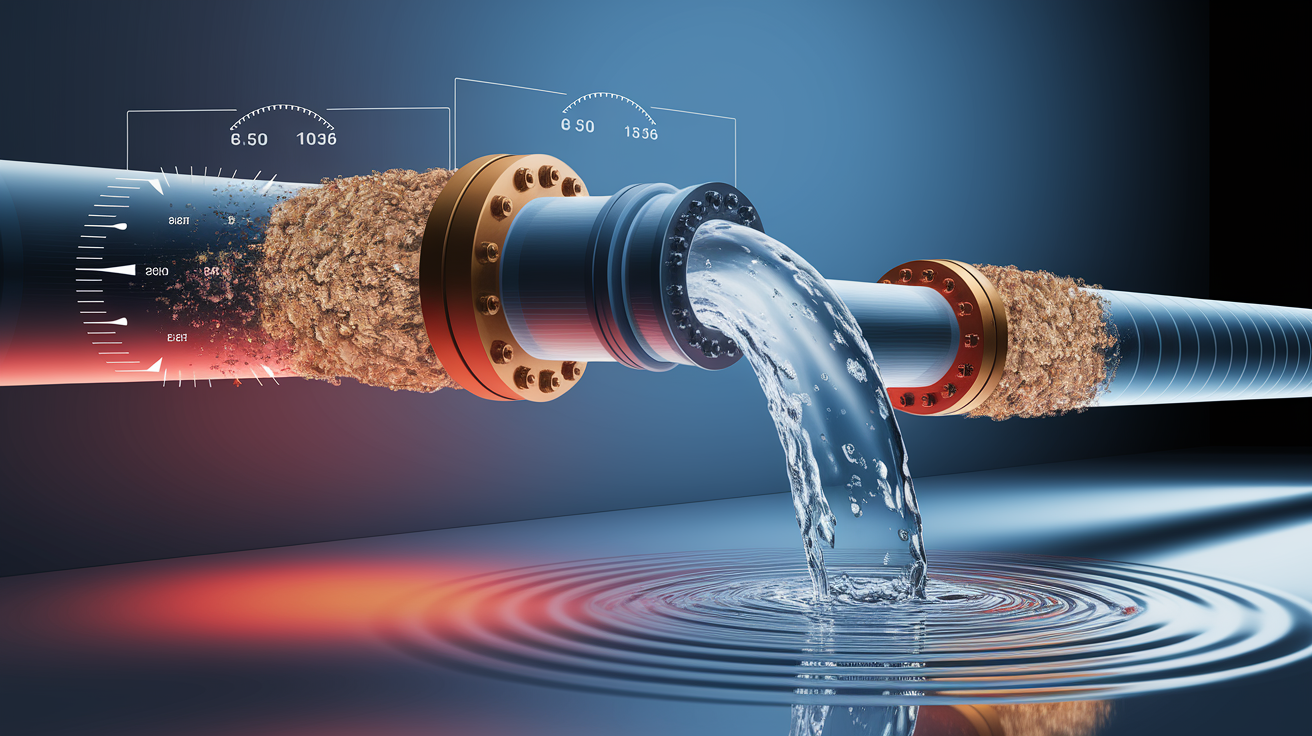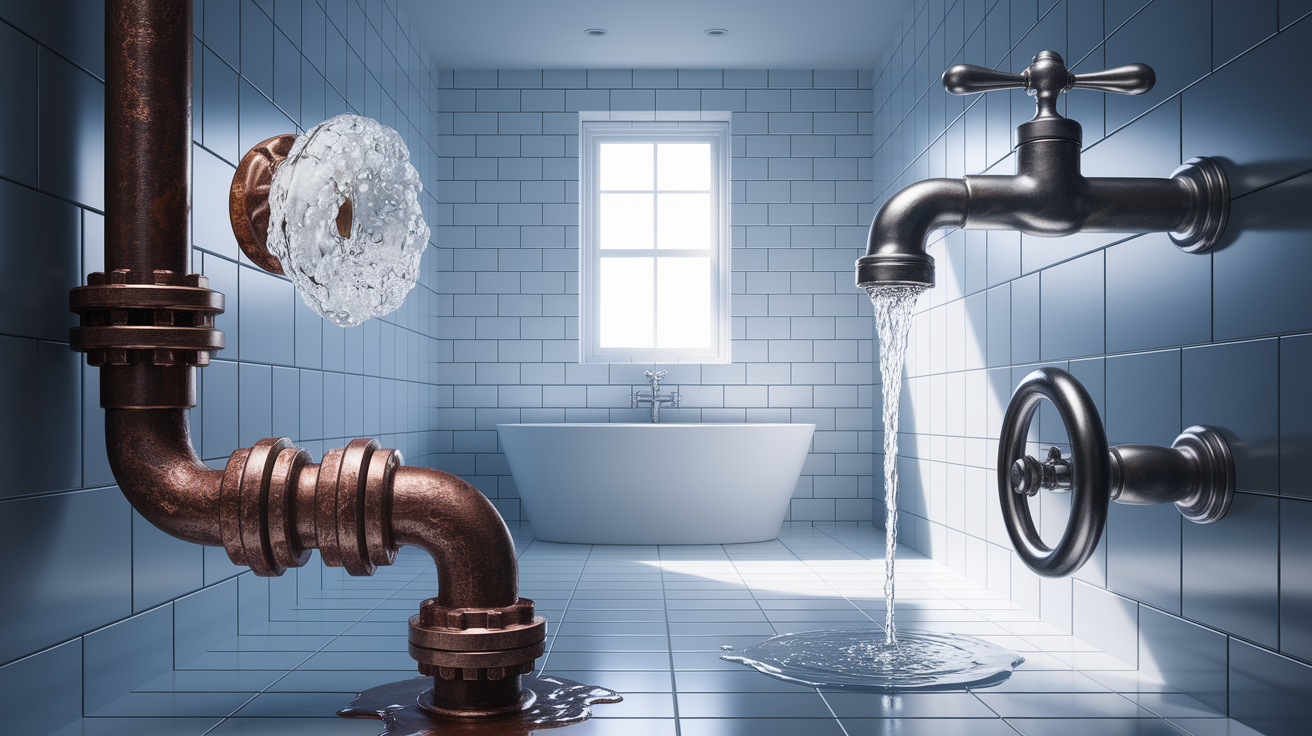A weak shower, a slow-filling washing machine, or a garden hose that just doesn’t have the oomph it used to – these are all tell-tale signs of water pressure problems. Whether you’re experiencing frustratingly low water pressure or the damaging effects of high water pressure, understanding the causes and solutions is key to restoring balance to your home’s plumbing. This guide will walk you through diagnosing your water flow woes and provide practical steps for DIY fixes, as well as advice on when it’s time to call in a professional.
Under Pressure? Diagnosing Your Water Flow Woes
Before you can tackle any water pressure problems, it’s crucial to understand what you’re dealing with. Is the pressure consistently low, annoyingly high, or does it seem to have a mind of its own, leading to fluctuating water pressure? Each scenario points to different potential causes.

Low water pressure often manifests as:
- Showers that trickle instead of spray.
- Faucets that take a long time to fill a sink or bathtub.
- Washing machines or dishwashers that run longer cycles or don’t clean effectively.
- Difficulty using multiple fixtures at once.
Conversely, high water pressure might present as:
- Water splashing forcefully from faucets.
- Banging noises in pipes (water hammer).
- Leaks in plumbing fixtures or pipes.
- Appliances wearing out prematurely.
A proper plumbing pressure diagnosis is the first step. Pinpointing whether the issue affects a single fixture, your entire home, or just the hot or cold water will help narrow down the culprits.
Common Culprits Behind Low Water Pressure
Low water pressure issues can arise from a variety of factors, ranging from simple blockages to more complex plumbing system problems. Understanding these common culprits is essential. Many homeowners wonder, “Why is my water pressure low throughout the house?” and often, one of these reasons is to blame.

Pipe System Problems
Your home’s network of pipes is often the primary source of pressure issues:
- Debris Accumulation: Over time, sand, sediment, grease, and even small pieces of deteriorating pipe can build up inside your pipes, obstructing flow. This type of debris buildup is a common cause of low water pressure. Known as clogged pipes, these obstructions act like chokepoints in your plumbing system.
- Pipe Corrosion: Older homes, particularly those with galvanized steel pipes, are susceptible to pipe corrosion. As these pipes rust from the inside, the internal diameter shrinks, restricting water capacity and leading to low water flow.
- Clogged Fixtures: Sometimes the problem is localized. Aerators in sink faucets and mineral buildup in showerheads can become clogged, significantly reducing flow at that specific point. The Spruce discusses how clogged aerators can impact pressure.
- Leaky Pipes: Even small leaks in plumbing can divert water and reduce overall system pressure. These compromised water lines not only affect flow but can also lead to significant water damage if left unaddressed.
Valve and System Controls
Valves and other control components play a crucial role in managing your home’s water supply:
- Partially Open Main Water Valve: This is a surprisingly common issue. Your home’s main water valve, or individual fixture valves, might not be fully open, restricting the flow. Some real estate resources even highlight this as a primary cause to check.
- Faulty Pressure Regulator (PRV): Many homes have a pressure reducing valve (PRV) installed on the main water line to prevent high municipal pressure from damaging plumbing. If this device malfunctions or is improperly set, it can cause either low or high water pressure throughout the house. These pressure regulator issues often require professional attention.
- Pressure Tank Failures: If your home uses a private well system, a malfunctioning pressure tank can lead to significant water pressure problems. These tanks store water and maintain pressure; failure means inconsistent flow.
- Water Softener Issues: A malfunctioning or improperly sized water softener can also restrict water flow into your home.
Appliance Usage Patterns
Sometimes, the problem isn’t a fault in the system but rather how you’re using it:
- Simultaneous High-Flow Appliance Use: Running multiple high-demand appliances at once (e.g., shower, washing machine, dishwasher) can temporarily reduce pressure if your system can’t keep up. This is a common reason for low water pressure when using two faucets or more.
- Outdoor Watering: Using sprinklers or hoses for outdoor watering, especially during peak indoor usage times, can strain your system’s capacity.
External Infrastructure Factors
Occasionally, the source of your water pressure problems lies outside your property lines:
- Municipal Water Supply Issues: Problems with the city’s water mains, such as fractures or ongoing maintenance, can affect an entire neighborhood. Happy Hiller notes municipal supply issues as a potential cause.
- Regulation Changes: New city ordinances or adjustments by the water utility can sometimes impact the supply pressure to your home.
- Zone Pressure Limitations: Older municipal infrastructure might struggle to consistently supply adequate pressure to all areas, especially during peak demand.
Diagnosing the Drop: DIY Assessment
Before you can fix the problem, you need to do some detective work. A systematic plumbing pressure diagnosis can save you time and money. Here’s how to test your home’s water pressure and look for clues:

1. Test Your Water Pressure
One of the first questions to answer is, “How do I test my home’s water pressure?” It’s simpler than you might think.
- Purchase an inexpensive water pressure gauge (available at most hardware stores).
- Attach the gauge to an outside hose bib or the cold water faucet for your washing machine. Ensure no other water is running in the house.
- Turn the faucet on fully. The reading on the gauge is your home’s static water pressure.
- The ideal water pressure range is typically between 45 and 55 psi. Some sources say up to 60 psi is fine, but much higher (e.g., over 80 psi) can damage pipes and appliances. Check your local building codes for specific recommendations.
2. Check Fixtures Individually
Is the low water pressure affecting all fixtures or just one? This is a key diagnostic step.
- If it’s just one fixture (e.g., “low water pressure in shower only” or “troubleshooting low water pressure after replacing faucet”), the problem is likely localized to that fixture’s aerator, cartridge, or supply line. For instance, “low water pressure in upstairs bathroom only” could indicate issues specific to that branch of your plumbing.
- If all fixtures are affected, the problem is more widespread, likely involving the main water line, PRV, or a major leak.
3. Inspect Key Valves
- Main Water Shut-Off Valve: Locate your main water valve (often near where the water pipe enters your house or at the water meter) and ensure it’s fully open. Sometimes these valves get partially closed accidentally.
- Pressure Reducing Valve (PRV): If you have a PRV, inspect it. “Signs of a faulty water pressure regulator” include consistently low pressure, high pressure, or fluctuating pressure. Some PRVs are adjustable, but proceed with caution.
4. Look for Leaks in Plumbing
Leaks are a common cause of low water pressure.
- Visually inspect accessible pipes, under sinks, and around toilets for any signs of moisture or active leaks.
- Use your water meter to check for hidden leaks: Turn off all water-using appliances and faucets. Note the reading on your water meter. Wait an hour (without using any water) and check the meter again. If the reading has changed, you likely have a leak somewhere.
5. Check Your Water Heater
If you only experience low pressure with hot water, the issue might be with your water heater. Sediment buildup in the tank or issues with its valves can restrict hot water flow.
6. Ask Your Neighbors
If your neighbors are also experiencing water pressure problems, it could point to an issue with the municipal water supply rather than your home’s plumbing.
Quick Fixes to Boost Flow
Once you have a better idea of the potential cause, there are several quick fixes you can try to improve your low water flow. Many resources offer guidance on how to fix low water pressure with these simple steps:

- Clean Faucet Aerators and Showerheads: This is often the easiest fix for localized low pressure. Unscrew the aerator or showerhead, disassemble it (if possible), and soak the parts in a solution of equal parts white vinegar and water for a few hours to dissolve mineral buildup. Rinse thoroughly and reinstall.
- Ensure the Main Water Valve is Fully Open: As mentioned, check that your home’s main shut-off valve is in the fully open position. For gate valves, turn counter-clockwise until it stops. For ball valves, the handle should be parallel to the pipe.
- Adjust the Pressure Regulator (PRV) Carefully: If you have an adjustable PRV and your pressure is consistently low (and you’ve confirmed there are no leaks), you might be able to slightly increase the pressure. Look for an adjustment screw on top of the valve. Typically, turning it clockwise increases pressure, and counter-clockwise decreases it. Make small adjustments (e.g., a quarter turn at a time) and re-test the pressure. Caution: Over-adjusting can lead to dangerously high water pressure. If unsure, consult a professional.
- Check Your Water Softener: If you have a water softener, try putting it in bypass mode. If your water pressure improves significantly, the softener itself is likely restricting flow and may need maintenance or replacement.
- Stagger Appliance Usage: If your pressure dips when multiple appliances are running, try to stagger their use. For example, don’t run the dishwasher and washing machine while someone is showering. This isn’t a fix for underlying plumbing pressure diagnosis issues but can help manage demand.
When to Call in the Cavalry
While many water pressure problems can be resolved with DIY efforts, there are times when it’s best to call a professional plumber or handyman services. Attempting complex repairs without the right knowledge or tools can sometimes make things worse.
Consider calling a professional if:
- You’ve tried the DIY fixes and still have persistent low water pressure throughout the house.
- You suspect a major leak, especially one hidden in walls, under the slab, or in the main water line between the meter and your house.
- Your plumbing pressure diagnosis points to a faulty or failing Pressure Reducing Valve (PRV) that needs adjustment or replacement. “Pressure regulator issues” can be tricky.
- You have older galvanized pipes and suspect widespread pipe corrosion might be the culprit, potentially requiring re-piping.
- You have a private well system and suspect problems with the well pump or pressure tank.
- The issue seems related to the municipal water supply (e.g., your neighbors have the same problem, or the city water department has confirmed an issue).
- You’re simply uncomfortable or unsure about tackling any of the diagnostic steps or repairs yourself.
A licensed plumber can accurately diagnose complex water pressure problems, perform necessary repairs safely, and ensure your plumbing system complies with local building codes.
Flow Restored: Next Steps for Consistent Pressure
Once you’ve addressed your water pressure problems and restored a healthy flow, a few proactive steps can help maintain consistent pressure and prevent future issues:
- Regular Maintenance: Periodically clean faucet aerators and showerheads to prevent mineral buildup. This simple task can make a big difference in maintaining good flow at individual fixtures.
- Mindful Water Usage: Continue to be aware of simultaneous high-demand water use. While your system should handle normal loads, minimizing overlap can reduce strain.
- Leak Vigilance: Regularly inspect for signs of leaks in plumbing around your home and keep an eye on your water bill for unexplained increases, which could indicate a hidden leak.
- Consider Upgrades (If Necessary): If your home consistently suffers from low pressure due to issues like undersized pipes or low municipal supply (and it’s permitted by local regulations), you might explore options like installing a water pressure booster pump. These devices can increase the water pressure coming into your home to a more desirable level.
- Understand Your System: Familiarize yourself with your home’s plumbing system, including the location of the main shut-off valve, any PRVs, and your water heater. Knowing your system can help you spot and address issues more quickly.
By understanding the causes of both low and high water pressure, performing basic plumbing pressure diagnosis, and knowing when to tackle a fix yourself versus calling a professional, you can ensure your home’s water flows just right. Consistent and appropriate system pressure not only makes daily tasks more pleasant but also protects your plumbing and appliances from unnecessary wear and tear.
Frequently Asked Questions (FAQs)
Q: What causes low water pressure throughout the house?
A: Common causes include a partially closed main water valve, a failing pressure regulator (PRV), widespread pipe corrosion (especially in older homes), significant leaks in the plumbing system, or issues with the municipal water supply.
Q: How can I increase my water pressure?
A: Start by checking simple things: ensure the main valve is fully open and clean fixture aerators. If you have a PRV, it might need adjustment (carefully). For systemic low pressure, a plumber might recommend pipe replacement or a water pressure booster pump.
Q: Why is my water pressure suddenly low?
A: Sudden low pressure could be due to a newly developed leak, a valve being accidentally closed (main valve or a valve near an appliance), recent municipal water work in your area, or a sudden failure of a component like a PRV or well pump.
Q: Can a clogged pipe cause low water pressure?
A: Absolutely. Clogged pipes, whether from debris, mineral buildup, or corrosion, restrict water flow and are a very common reason for low water pressure, either at a single fixture or throughout the house if the main lines are affected.








